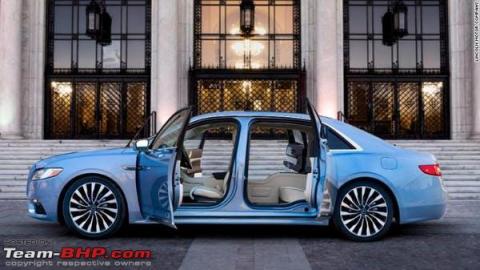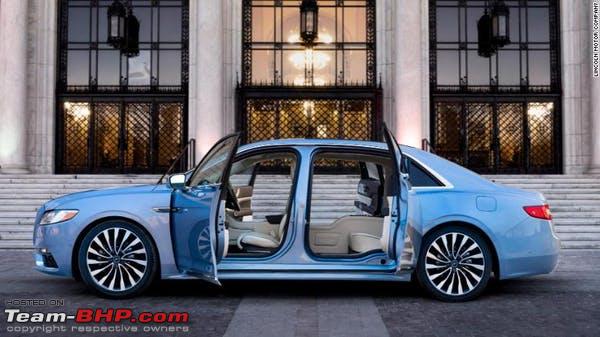Car designers, while planning for ingress and egress, seem to believe that the ingress and egress routines are meant to help the car using population develop suppleness and balancing skills to build healthier bodies.
Thanks to BHPian V.Narayan for sharing this with other enthusiasts.
Car designers, while planning for ingress and egress, seem to believe that the ingress and egress routines are meant to help the car using population develop suppleness and balancing skills to build healthier bodies. So to get into a sedan or hatchback with today’s typically low design (SUVs and Crossovers are thankfully taller) and front-hinged doors, you must first balance on one foot, lean the torso away from the car, grab something inside like a steering wheel or the front seat headrest and then do a half supine matsyendra asan (yogic spinal twist) and slide yourself in while ducking your head. Phoofh you are in. Photo below illustrates what I mean and this is a slim relatively young person mind you.
For older people, pregnant ladies, and over weight folks both the balancing and the bending are a challenge.
Designers seem to assume that all drivers and passengers are 30 something, slim, medium height and with supple bodies that can twist and turn to get into cars with ever lower heights and front-hinged doors. Reality is that cars are used, both as drivers and passengers, by people of all ages, all kinds of body sizes, heights, girth and flexibility. Users include women who are expecting and old people who can’t balance or bend too well, factors that are completely ignored by designers. Photo below illustrates how the elderly cope with front-hinged car doors and low heights.
Earlier i.e. till the mid-1980s, in India at least, both the Ambassador and Padmini were what is today termed a tallboy design. Even before that, till circa the 1940s several, though not all, cars had rear-hinged doors or coach doors (as Rolls Royce & Lincoln termed it) or suicide doors in auto-slang. My grandfather’s Opel which I last drove in 1998 had both – coach doors and a tall boy design. It was easy, super easy to get into even for my grandfather who was very old by then.
In the pursuit of aerodynamics, or alleged aerodynamics (the word alleged coming from someone from the aviation industry), designers have made cars lower and lower making ingress tougher and tougher for a wide swathe of the user population. Aerodynamics is, in my opinion (with a little bit of knowledge on the subject), irrelevant, from a practical point of view, for a vehicle whose life time average speed is likely to be 50 to 60 km/h. Energy loss due to tyre friction, transmission losses and many others count for a lot more in a slow moving vehicle like a car than aerodynamics. But aerodynamics makes a great selling point as does making the car dashboard look like a cockpit. In cars aerodynamics only starts making a small, very small, impact at say a running speed of 120 to 140 km/h. Notice how single propeller general aviation light planes almost never bother with sleek, streamlined designs? – that’s because at their cruise speed of say 180 km/h it isn’t an over riding concern. The only area at car speeds where aerodynamics matters is in tyre grip on the road.
Front hinged doors leave inadequate space for easy entry and exit.
These days only the very top end of cars like some Bentleys and Rolls Royces seem to feature coach doors hinged at the rear to make ingress and egress easy and comfortable sans yogic competencies.
I wonder why?
They say that coach doors or suicide doors are unsafe as a passenger could fall out if they open accidentally while the car is in motion. Maybe so. But with today’s car locks, central locking, seat belts this might be less the case.
Would love to hear the views of members on making comfortable ingress and egress for all ages and sizes a factor in our car designs. Rear hinged doors and car designs are both simple solutions.
PS: For me personally it is not a case of grapes are sour, not as yet at least. I’m of medium build, medium height and have practised yoga for decades. But I observe this with my batchmates and folks in my social circle all the time – the wriggling and balancing and struggling to get in and get out.
Thanks to V.Narayan again. Check out BHPian comments for more insights and information.
Source: Read Full Article



